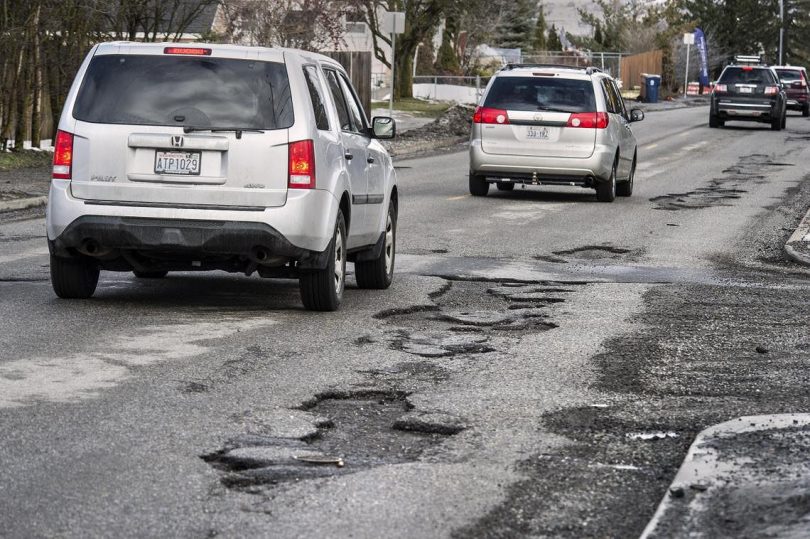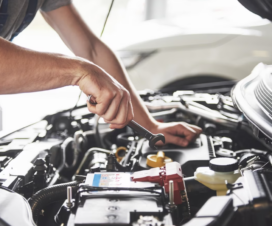 |
Drivers often take their car suspension kit for granted. But they should remember that this single system supports tons of metal every year, and after it registers shocks daily, it can wear out and need repairs or even replacement. People often have the misconception the suspension system only facilitates a smoother ride, but if not properly maintained, it can influence the control over the vehicle, when turning and stopping. So, it’s best if drivers periodically check it, and ensure they run maintenance and repair work when needed.
But for a beginner driver, suspension problems are challenging to diagnose. This guide will highlight the most common symptoms associated with car suspension issues.
As a driver, it’s your job to pay attention to how your car handles and identify the problems before they threaten your safety and health.
Read on, to discover the most common signs of cars with suspension problems experience.
The vehicle pulls to the side when you drive

Source: cardiffstudentmedia.co.uk
When your car pulls to the right or left, it probably has a suspension problem. But you cannot tell for sure at home because only an expert can identify the issue. Sometimes it’s just an alignment issue, and the mechanic will correct their position. A poor alignment can trigger pulling, uneven tire pulling, decreased gas mileage, and a hard to maneuver steering wheel.
Several causes can lead to your vehicle pulling when on the road. The mechanic will first check the tire pressure, tire wear, alignment, steering racks, tie rods, and brake calipers. Once they make sure none of these problems makes your car to pull, they will check the suspension kit.
Climbing over a curb or blowing through a pothole can disrupt the vehicle’s alignment. Often changes in alignment are a result of a broken control arm or broken spring.
Before heading to the service, check the tires because inflating or underinflating them can solve the problem. If it doesn’t work, head to the local shop and professional will check the suspension components.
You can feel every bump in the road

The suspension kit directly influences the comfort of the ride, so if it’s rough, your struts and shocks are probably worn, and you must replace them. Sometimes the bump in the road isn’t even that big, but you can feel it no matter how fast you drive. It’s a sign your car needs a check-up.
You can try the bounce test at home, to figure out what the condition of the suspension system is. Park your car on a flat surface, pull your weight on the front side of the vehicle and release it. The way it responds to your actions points out the problem. When the car bounces back more than four times, you need to replace the struts and shocks.
Your car has some parts called shock absorbers that are true to their name. When they’re broke your ride will be more rugged than usual. Their role is to maintain the tires on the road, but when they fail to accomplish it, they impact the quality of the ride. Shock absorbers have fluid that lowers the bouncing, but when it leaks, they affect the performance of the car.
Sometimes the leaf springs make the ride choppy. You can also check for this problem at home when you park the car on a flat surface. When the leaf springs are busted, the vehicle tends to lean back. But, your model of the vehicle may be designed to stay nose down to accommodate the weight in the back, so make sure you know what its features are before you take this test.
The car has a corner lower than the others

Source: project1320.com
You won’t miss this sign because it’s visible when one of the corners of the car is lower than the others. Take it to the shop because the mechanic needs to replace the damaged spring. Often, a lower corner is accompanied by a clunking noise when you go on a bumpy road. You cannot take turns properly because the spring affects the performance of the car, and it doesn’t support its weight.
The connection between the spring and shock causes the clunking noise. Sometimes a blown shock doesn’t impact the position of the car, but it can influence its reaction in adverse road conditions. A regular check-up will tell you if the vehicle experiences an over-compression of the spring.
You can diagnose the problem at home if you push down on the backside of the car and listen to the response of the suspension. If you are squealing or creaking answers to your action, buy a new 4×4 suspension from a website like Pedders because you probably have an issue with the bushings, springs, shocks or other similar parts.
If you notice even the slightest difference in height in one of the corners, call a mechanic because it indicates a failure in the function of springs and shocks.
Momentum affects your car position

Source: whichcar.com.au
You need to replace the struts or shocks when your car’s nose dives forward when you brake when the vehicle comes to the side when you corner, or if it squats when you accelerate.
You can get these effects in extreme conditions, but they’re not part of regular driving experience. Cars with new suspension kits driven at high speeds can create the same results. But now we’re talking about day-to-day driving conditions when you cannot remember when the last time you checked the tires were. Your car shouldn’t lean when you are driving casually around town.
You find it challenging to handle the steering

Source: pixabay.com
However, difficult steering can also be the sign of worn control arm bushing, leaking power steering rack, broken power steering pump, loose or worn power steering belt, or low power steering fluid.
It’s smart to take your car for a professional check-up when you notice any of the above symptoms.




